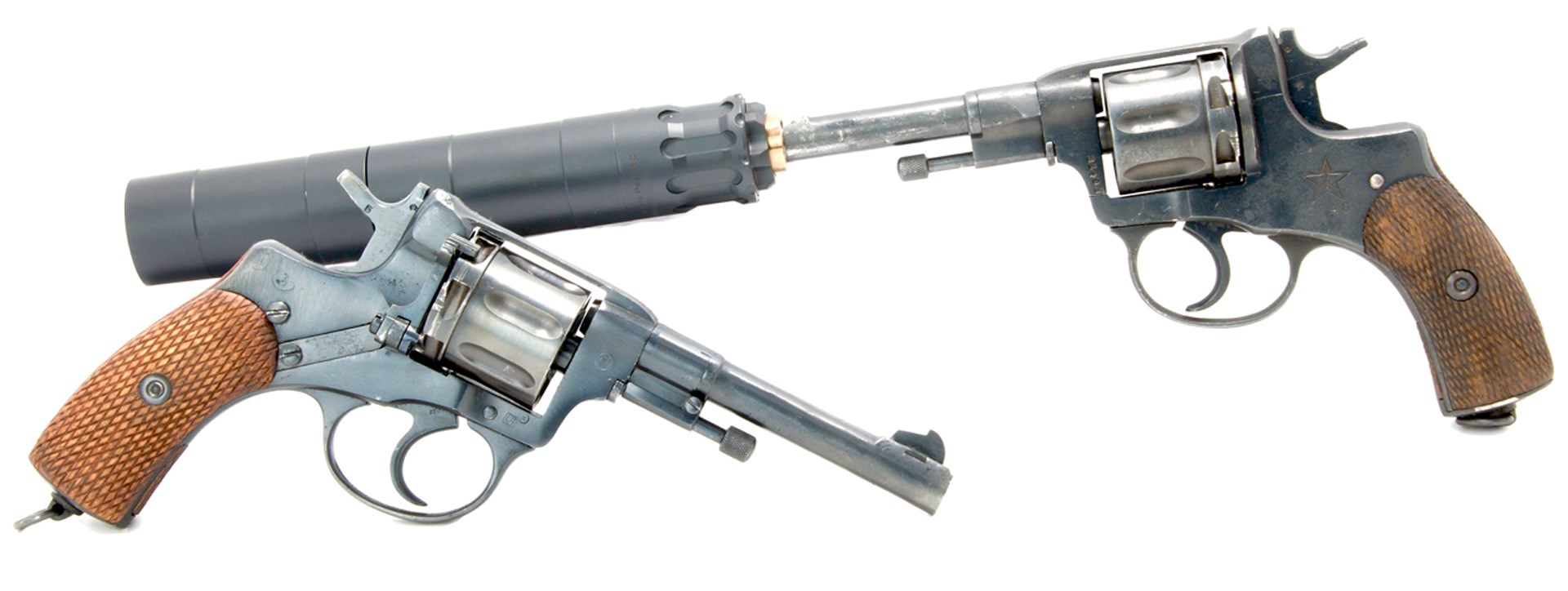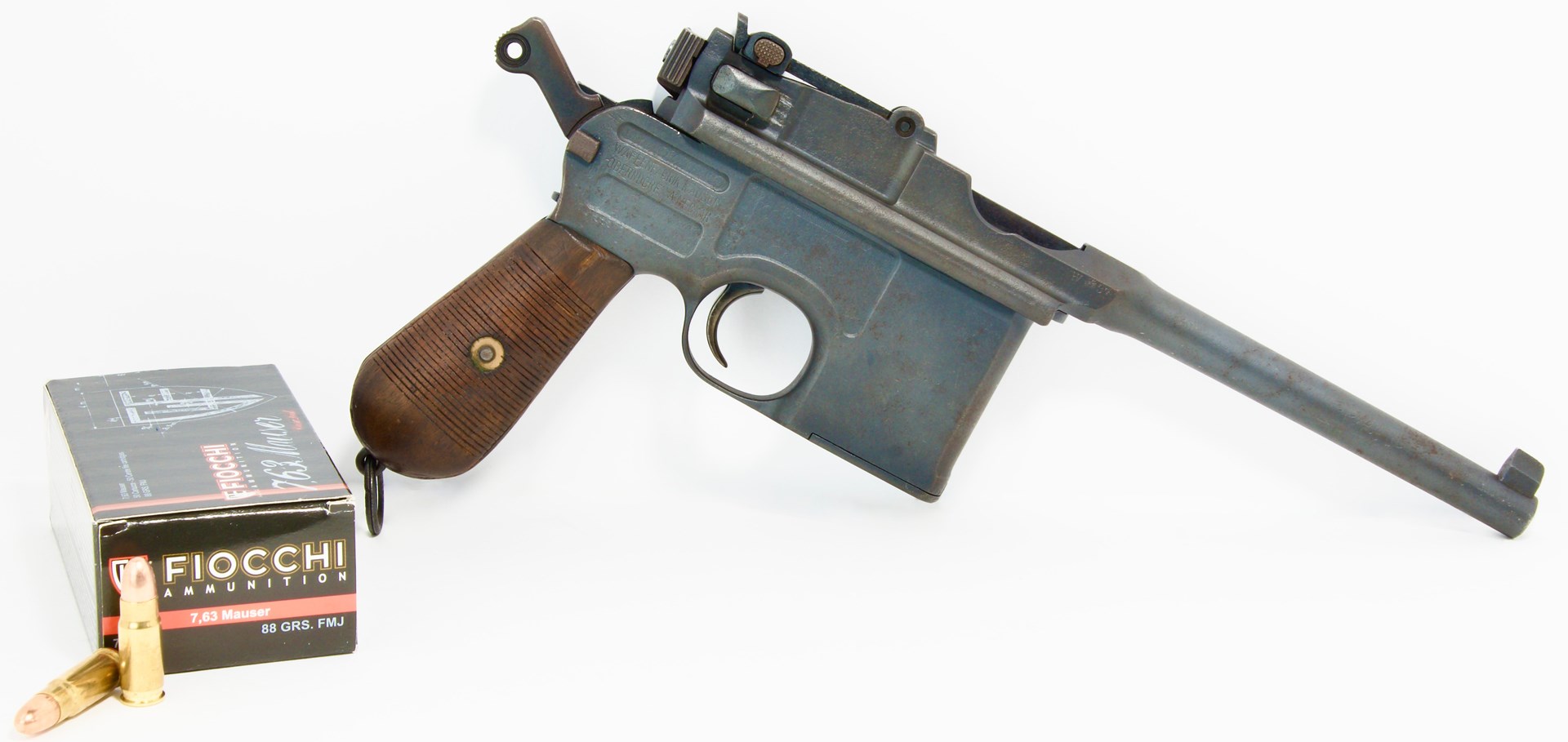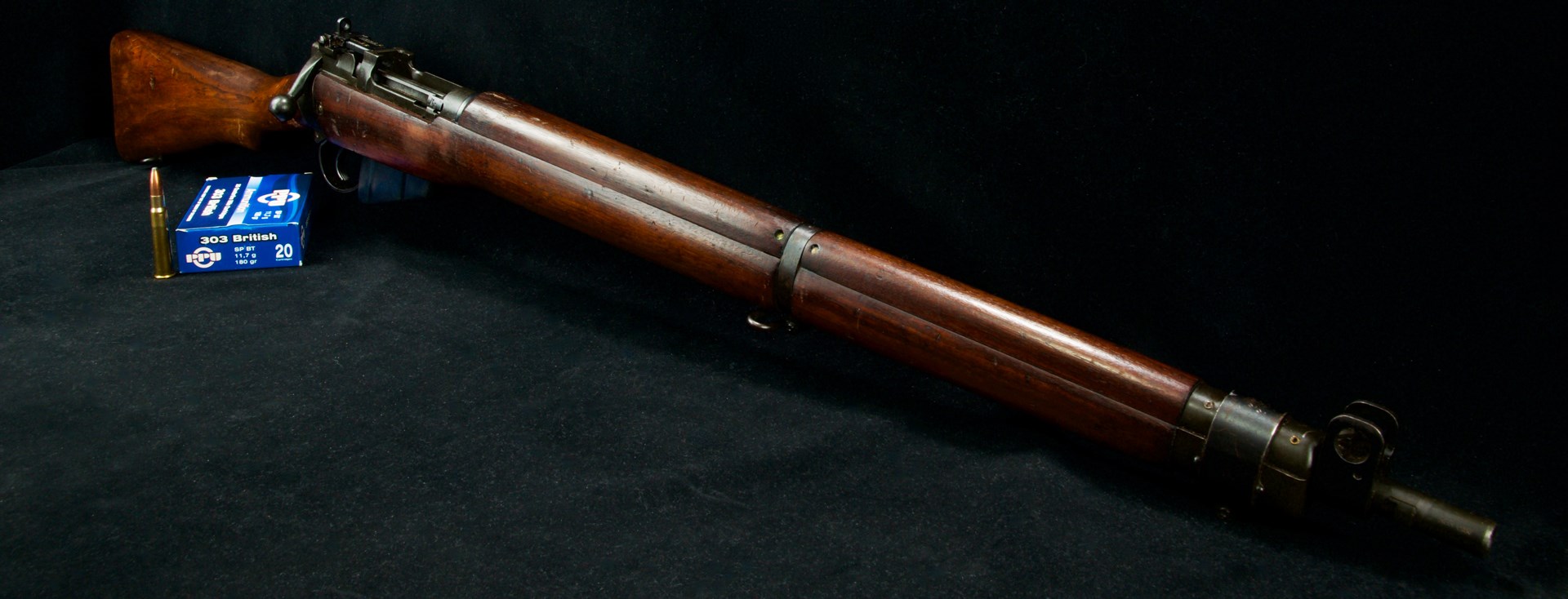Owning and shooting a real piece of world history in the form of a
military-surplus firearm is one of the most exciting facets of gun
ownership. It can also be the source of quite a bit of frustration. With
these “antiques,” frustrating circumstances can arise for even the most
seasoned collectors and shooters. That said, those who are brand new to
military surplus firearms are at a greater risk of facing the
consequences of an imprudent purchase. Some military surplus firearms
lend themselves very well to introducing a shooter or collector to the
hobby. Other guns may leave new collectors feeling remorseful over their
purchase. The taste and goals of the collector will have a great effect
on their purchasing decisions and, subsequently, their initial
experience with the hobby.
Those looking for a piece of history they can enjoy both owning and
firing at the range will find that there are some excellent options on
the market, as well as some they should likely avoid. Keep in mind that
all of the firearms below are excellent collectible pieces and may even
be great shooters. Just because a certain firearm may not be the best
choice for a new collector and shooter does not mean they are not worth
owning for those more familiar with it. Also, ammunition availability
will have varying degrees of effect on different collectors. The
ownership experience may differ greatly based on if a collector can find
ammunition or already has the means and skill to reload the
often-obsolete cartridge.
Three Great Military Surplus Arms New Collectors Should Know About
The Mosin-Nagant M91/30
The Mosin-Nagant has been
a popular gateway into military surplus firearms collecting for many
years. The Mosin is a sturdy workhorse. It is a bolt-action rifle of
Russian origin. The rifle has gone through several well-known iterations
and variants, which played their roles with Russian troops in both
world wars. It was used in countless other conflicts around the world
and, unbelievably, is still being fielded by a handful of warfighters
and militants to this day. This is all to say that the Mosin-Nagant has a
fascinating history.

While not nearly as cheap as they were back when folks could buy them
by the crate for less than the cost of a new cellphone, Mosin-Nagants
have managed to stay well below the price of contemporary offerings.
Online prices for all military surplus rifles are generally above
average, but Mosins can be found for between $300 and $500. There are
certainly cheaper military surplus firearms, like the Carcano M91, but
for collectors who want to shoot, ammo availability must be a
consideration. Like many others, Carcano ammo has, unfortunately, mostly
dried up for the time being. The 7.62x54 mm R round chambered by the
Mosin-Nagant has certainly risen in price, but it’s nowhere near to the
extent of something like Carcano ammo. It also remains available to buy
off the shelves of many local gun stores and large outdoor retailers.
When shooting, the recoil on the Mosin-Nagant is stout, and the
muzzle report is hearty. Recoil is not so bad that it should keep a
collector from enjoying the experience, but if that does happen to be
the case, many companies produce rubber padding for the Mosin that can
be slipped around the butt of the gun to reduce felt recoil. The Mosin
is as easy to clean as it is to operate. The simplicity of the rifle is
part of its charm. Between being easy to find, easy to shoot and easy to
keep clean, the Mosin is a great introductory choice into military
surplus.
The Swedish Mauser M1896
The Swedish Mauser Model
of 1896 is a step up from the price of the Mosin. With this increase in
price comes an increase in the quality of firearm being purchased. The
Swedish Mausers are known for their excellent fit and finish. Even those
like the one pictured, which has taken many dings and dents, maintain
an undeniable aesthetic quality. The Swedish M1896, also known as the
M96, is said to be one of the most accurate military surplus rifles ever
imported. This makes it an obvious choice for new collectors who want a
top-notch shooting experience with their first military surplus rifle.
The Swedish Mausers have an intriguing history of their own, which I
recommend new collectors look into, regardless of their choice of first
purchase.

The M96 chambers the 6.5x55 mm (Swedish) cartridge. Excellent
ballistic performance and minimal recoil are both hallmarks of this
round, and it happens to be a somewhat popular hunting cartridge here in
the United States. This means that several manufacturers are producing
ammunition for the M96, which a collector should be able to find at many
local gun stores and large retailers. The performance of a
well-preserved M96 with quality ammunition is great, even by today’s
standards. The high build quality of the M96 paired with its ballistic
performance make it an ideal choice for new collectors who want to
squeeze the best possible accuracy results out of their surplus firearm
at the range.
The Nagant M1898 Revolver
When searching for a
military surplus pistol with which to begin a collection, the Nagant
M1898 is a solid choice. Much like the Mosin, it has a storied past in
service to Russia through two world wars. It has been used in a variety
of other conflicts over the years. The Nagant pistol is mechanically
unique, but does share many traits with other revolvers of the late
1800s. It is also relatively easy to fieldstrip for cleaning.

The M1898 is chambered in the 7.62x38 mm R (Nagant) cartridge. This
peculiar cartridge features a rebated bullet with a case mouth that
extends beyond the projectile’s tip. Working in conjunction with a
forward-moving cylinder that forms a gas seal with the barrel’s forcing
cone when firing, the extended case means that there is little in the
way of gas or particles to bother the shooter. This gas seal was
designed to increase velocity but also notably allows the revolver to be
suppressed effectively. The ammunition is not necessarily “readily
available” at the local level, but it can easily be found online at
about 50 cents a round, as of this writing. This price reflects
factory-loaded, non-corrosive ammo. Buying surplus packages of corrosive
ammunition will mean lower prices yet. A collector just has to be sure
that they know how corrosive ammo affects their firearm and to clean it
accordingly. The gun itself produces very little recoil and is quite a
pleasant plinker, aside from its heavy trigger. Nagant revolvers are
rising in price but can still be purchased for around $500 online, with
some local stores selling them for less. The M1898 is a great way to
start up a collection, especially if the collector wants to focus on
handguns.
Three Military Surplus Arms To Avoid, Or Save For Later
The Mauser C96
The Mauser C96 is a pistol with an
incredible history. It was used in myriad conflicts around the world,
including both world wars. Known affectionately as “The Broomhandle” due
to the layout of its grip, it has been featured popular media. It was
famously modified to create an iconic blaster in the Star Wars
franchise. The C96 can be a really great firearm to own and shoot, but
that isn’t always the case. While a new collector might be attracted to
such an iconic firearm, the C96 may not be the right way to get into
military surplus firearms if the collector actually wants to shoot.

While the C96 was a well-made pistol that held a good reputation when
it was introduced, the years have not been kind to many examples on the
market. With the value of C96s rising steadily, buying one without
being able to fire it is a risky maneuver. An all-matching C96 in good
shape can fetch thousands of dollars. There are so many little things
that can go wrong in the many moving parts of the C96, and not many good
quality replacement parts are available. Even with the parts,
troubleshooting the C96 can be a long and arduous process, even for a
more seasoned collector.
This is an issue with many surplus firearms, both popular and
obscure. Assessing the rarity of important components is a crucial step
of a surplus firearm purchase. Understanding the hurdles you might face,
should the gun need repairs, will likely save you money and heartache
in the long run. Every year that passes, parts for the majority of
military surplus firearms become harder to find. Breakages and repairs
are constant, so the demand will always be there. The C96 pictured has
had hours of work and troubleshooting done and still has not returned to
functioning condition. If a collector plans to bring their military
surplus selection to the range, a gun like the C96 should not be a first
purchase, unless the buyer is positive it functions. Even then, they
should proceed with caution.
The Arisaka Rifles
Japanese firearms are some of
the most interesting used in the Second World War. Portrayals in popular
media like HBO’s “The Pacific,” have increased the appreciation many
prospective collectors have for these firearms, especially the Arisaka
rifles. The Arisaka rifles have appreciated greatly in value in recent
years, with the Type 99 variant currently selling online for between
$450 and $1,000 based on condition and variant. However, price is not
currently the barrier to entry for the Arisaka rifles. Ammunition, both
for the 6.5 mm and 7.7 mm variants of Arisaka, has become extremely
scarce. Reloading components exist for the rounds, but many new
collectors will not have the means to reload ammunition, much less the
obsolete cartridges required to fire many military surplus firearms.
Prices fluctuate, but 20 round boxes of factory manufactured 7.7
Japanese routinely sell for $3 a shot or more, when they can even be
found. Very few, if any manufacturers produce cartridges for the Arisaka
rifles at this time, so shooting them has become increasingly difficult
for those who don’t have the means to reload.

This is not only an issue with Arisakas, but with a host of other
military surplus firearms. Certain rounds that were once available on
the shelves of gun stores now rarely make an appearance, even in the
online market. Buying the needed tools and components to reload opens up
a lot of doors for military surplus shooters. For those who can’t load
their own ammunition, it’s imperative to research and consider the
current availability of ammo for a surplus firearm before taking it
home. While an Arisaka rifle makes an excellent addition to a collection
and is a joy to shoot at the range, the difficulty in acquiring ammo
for many new collectors is a sign that they should steer clear unless
they can produce the ammo themselves.
The Lee-Enfield Rifles
Lee-Enfield-pattern rifles
are excellent military surplus firearms to add to a collection. They
have a storied history of service with our allies in the United Kingdom.
Many who are familiar with the Enfield rifles may be surprised to find
them on this side of the lists. This surprise is not undue, as the No. 4
Mk I is a favorite among many military surplus collectors, and for good
reason. It shoots very well, it cycles quickly and the .303 British
round in which it’s chambered is still relatively available for
purchase, at least online.
For new collectors however, the current market of Enfield rifles can
be very difficult to navigate. First and foremost, Enfields were used in
a wide array of applications over the course of their service lives.
Information about its service can be deduced through the examination of
its markings, as with most any surplus arm. The various markings and
symbols represent things like the country the rifle served, inspection
information, when it was issued and whether or not it remained under
military ownership after that service. That’s just to name a few.
Without knowing what the symbols mean, a collector could find themselves
overpaying for something that isn’t quite what they wanted. For the
multitude of markings that appear on Enfields, there are also things a
potential buyer has to look out for, that may not be quite so obvious.

Some Enfield rifles, like several other military surplus arms, were
built or rebuilt for the purpose of training soldiers. These are
referred to as drill purpose rifles. Drill purpose rifles were not built
to the appropriate specifications to handle live fire with full-power
ammunition. The weakened construction of drill purpose Enfield rifles
means that attempting to fire a live round out of them could be an
injurious or even fatal venture. In the vast majority of cases, research
will supply a collector with the tools to identify drill purpose
rifles. Problems arise when it comes to drill purpose rifles that can’t
be easily identified upon inspection. Some Enfield rifles that have been
pieced together from parts can possibly contain components of dubious
quality or questionable origin. This however, is a pitfall of many
different military surplus platforms, not just the Enfields. Headspace
can also present a possible issue in all military surplus firearms,
including the Enfield rifles. Having a headspace gauge and understanding
how it works could help you to pick the right rifle when making a
purchase. Some Enfield rifles, like the one pictured can be fitted with
“numbered bolts.” There are a number of helpful resources on the
internet to learn about how they work, but in essence they can possibly
be used to adjust the headspace of an Enfield rifle.
The Enfield is truly a great firearm and having one in a collection
is a very rewarding experience. It’s not that the rifle itself is bad to
own or shoot, new collectors should give the platform some thought and
research before purchasing. Both research ahead of the purchase and
inspection from a competent gunsmith afterwards are great ways to avoid
buyer’s remorse, or worse down the road. The Enfield rifles, like all
military surplus firearms, should be examined by a qualified gunsmith
before use. It only takes one instance of an unsafe firearm being fired
to cause serious injury or death. While this is the worst-case scenario,
it should always be given ample consideration.
Diving Into The World Of Military Surplus Firearms Collecting
At the end of the day, every shooter and collector is
different and each enjoys and engages in the hobby and sport in
different ways. A shooter’s or collector’s specific circumstances and
taste in firearms will greatly affect what makes a “good” or “bad” first
purchase. With a few ideas of some qualities and conditions to look for
when selecting a first military surplus firearm, prospective collectors
are better equipped to make good decisions that, hopefully, will allow
them to enjoy collecting and shooting these mechanical pieces of history
for years to come.

















.jpg)




























